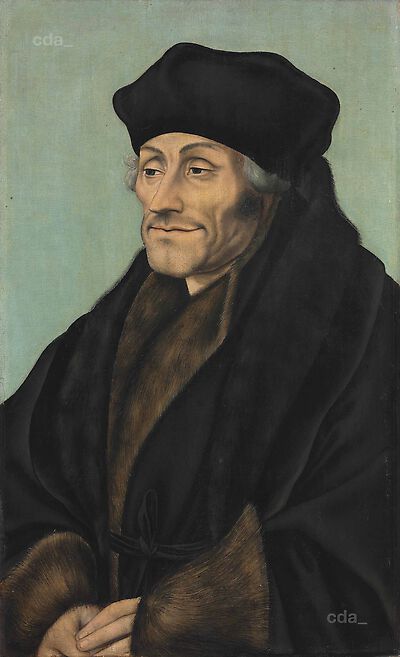Just as Lucas Cranach the Elder shaped the image of Martin Luther, representations of the Humanist Desiderius Erasmus of Rotterdam were informed by a portrait type evolved from 1523 by Hans Holbein the Younger. This was frequently reproduced in his workshop and embraced by many other artists. Erasmus was
Just as Lucas Cranach the Elder shaped the image of Martin Luther, representations of the Humanist Desiderius Erasmus of Rotterdam were informed by a portrait type evolved from 1523 by Hans Holbein the Younger. This was frequently reproduced in his workshop and embraced by many other artists. Erasmus was one of the leading scholars of his time: Luther translated the New Testament on the basis of the Greek original text edited by Erasmus in 1516, but fell out with him over the question of free will in 1524. Some portrait medallions created in 1519 after a portrait of Erasmus by Quentin Massys (1517, Palazzo Barberini, Rome) evidently could not satisfy the high demand for his image throughout Europe. The panel painting from the Cranach workshop is of high quality and reproduces the painted prototype by Holbein in every detail, showing only slightly more of the figure. But it is above all characterized by its larger format. Possibly the death of Erasmus in 1536 prompted the desire at the electoral court or among the Humanists in the University of Wittenberg for such an obviously more representative solution, and Cranach complied with their wishes by supplying this version. On the other hand it was Holbein who, for his woodcut of Martin Luther from about 1532, drew on Cranach¿s circular portrait of the reformer, for example the version in Kunstmuseum Basel.
[Görres, Exhib. Cat. Düsseldorf 2017,160, No. 71]

